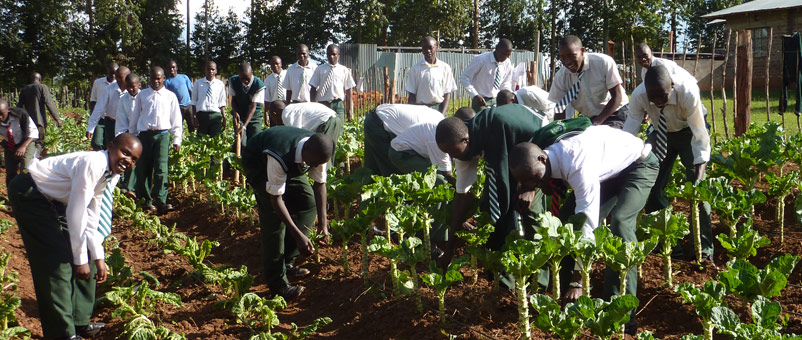Work has been taking place in Malawi to enable farmers’ to achieve the grades and standards required to take part in broader markets. Whilst a lack of technical and financial capacities is often the greatest hindrance to meeting these targets, which cover food safety, quality, social and environmental standards, the ever-changing nature of the standards themselves exacerbates the challenges facing smallholder farmers.
Since 2003, ICRISAT have been working with the National Smallholder Farmers’ Association of Malawi (NASFAM) to establish a “hybrid” system for ensuring achievement of standard requirements for the export of groundnuts from smallholder farmers’ associations in Malawi.
The project’s focus on groundnuts is the result of severe decline in the crop’s production, due to changing market requirements overseas, unavailability of seed in sufficient quantities and at affordable prices, and poor post-harvest handling.
Groundnuts are affected by aflatoxins, a naturally-occurring fungus which can infect crops during pod development or through poor post-harvest practices. Increasingly strict maximum allowable levels (MALs) of aflatoxin contamination in the European Union have prevented smallholder producers from accessing the European high-value markets.
According to the World Bank, the reduction of MALs to 4 parts per billion of aflatoxin has results in annual losses of over US$670 million for African countries.
The ICRISAT and NASFEM project objectives were:
- To increase productivity of groundnuts by providing improved varieties and the accompanying crop management options.
- To develop a system of grades and standards to enable smallholder farmers to participate in regional and international markets.
- To assist in development of a Market Information System.
Alongside training farmers in improved agricultural practices to increase yields and improve crop quality, the “hybrid” system created ‘production standards’ that would ensure farmers follow best practice to reduce the chances of infection by the fungus. These targets complement the ‘performance standards’ that are used in European markets, which determine the levels of a contaminant in a product.
The team also established an aflatoxin analytical laboratory in Malawi to help identify the sources of contamination and provide the necessary solutions, to help increase farmers’ chances of meeting the MALs.
Other steps also included organising farming groups into clubs who sell their produce at designated areas to allow for easy traceability.
ICRISAT has written,
The ability to accurately detect and quantify aflatoxin contamination at an affordable cost, allowed farmers in Malawi to re-establish groundnut exports to the quality-conscious European market, and stimulated interest in the approach in Mozambique and Zambia. Many other African countries are benefiting from this technology and appropriate management practices that reduce the initial aflatoxin contamination are being employed.


